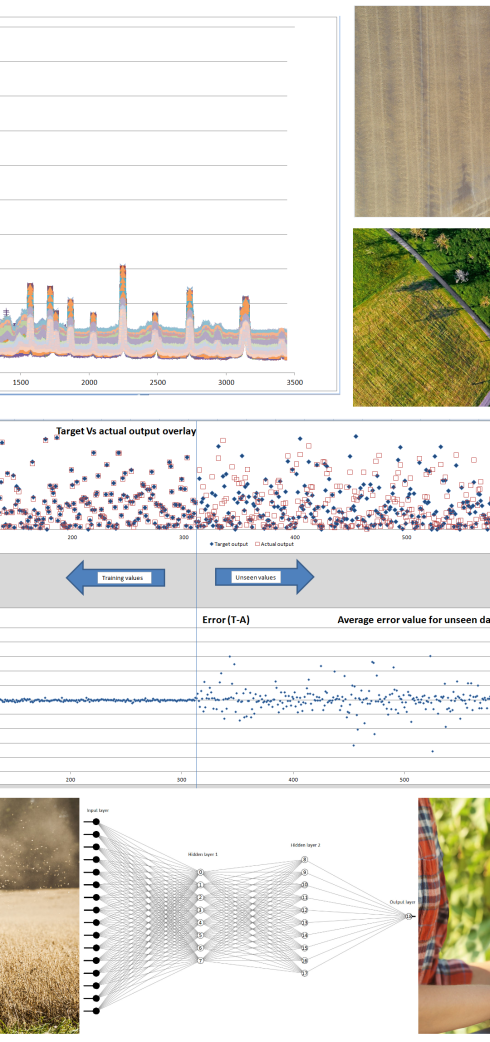
OPTIMISED CROP GROWING
Problem background
The client, a research institution, wished to explore a method of analysing soil mineral content data for the purpose of stategising which crop types would be most suitable for planting.
How the problem was approached
Using manually-processed data from historic chemical analyses of soil and crop-yeild data, artificial neural network training sets were devised, forming the basis of what types of crops require which types of soil. Following synthesis, iteration, optimisation and training of the network, previously-unseen data was used in order to verify and validate output.
Results
Employment of this technique was deemed to significantly aid crop selection, improve yield, increase biodiversity and make maximum use of land, especially useful where there was limited area for farming activities. Using this year-on-year data to optimise crop rotation also serves to facilitate mineral replenishment, further enhancing land utilisation and enrichment.
Key terms
-
Food technology
-
Agriculture technology
-
Crop sustainability
-
Crop yield improvement
-
Quantitative avoidance of monoculture
